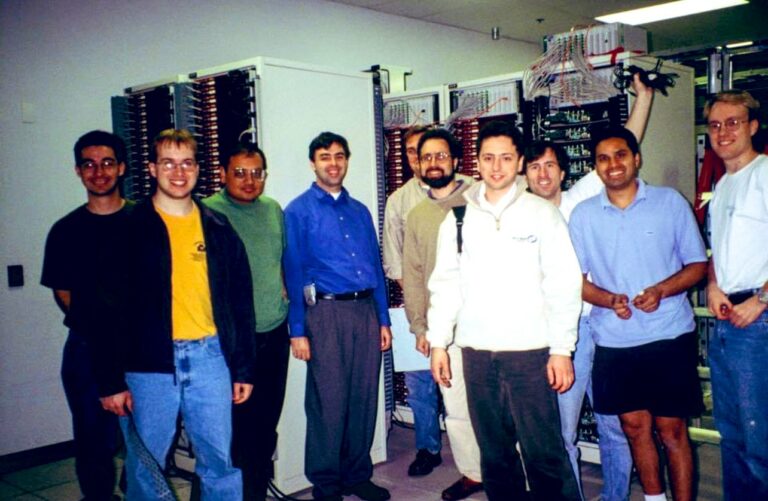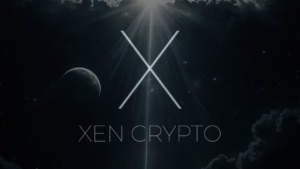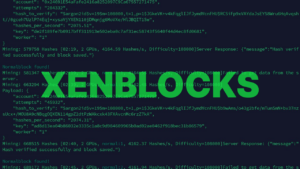Starting with crypto may feel like crossing into a different world. It’s completely anarchic, fast-evolving, innovative, and chaotic, just like the Internet was in its first decades of existence before companies like Google came to apply filters and put things into order. When you read about a crypto like XEN that is similar to Bitcoin and follows blockchain’s first principles, brought in by Satoshi Nakamoto and the Cypherpunks, putting Google in the same spot makes you wonder what this is all about. So here we are, untangling the topic for those wondering what’s the deal.
Jack Levin is the founder of the Fair Crypto Foundation and XEN Crypto. If you’re curious to know more about him, then we have this covered for you. He started his career as an early Google employee. He was their #21, and he had to build the whole infrastructure to make Google run fast and smoothly. He built their first three datacenters single-handedly and then three more with assistance. He oversaw deals with companies like Netscape, Yahoo, AOL, ASK, etc. When Google became too big, he felt he needed new challenges and started his own business, ImageShack. This was an instant success, and it also helped Twitter become what it is today.
When Jack Levin heard about Bitcoin from a friend, he got interested and dedicated his personal datacenter to mining. He used teach friends how to use Bitcoin wallets and he sent them some Bitcoin as a gift. During those years, he saw the crypto space transforming itself and diverging ever more from the original purpose of Bitcoin. He decided to create XEN to bring back the first principles of blockchain. XEN is trustless, decentralised, and permissionless.
“I believe that the simplest possible crypto can get the most people engaged and this comes from my experience at Google,” he says in one of his Twitter Spaces.
At Google, he learned not only how to build datacenters and the cloud but also how to do business, and, most of all, he helped Google become great.
“Google was the company that put search without ads first, and it was free. It was literally free, and Google was focused on acquiring the largest number of users as quickly as they could so that they could evolve their system.
“Monetization was always an afterthought for Google,” he says, “but when Larry Page and I and Sergey were talking about this, the whole philosophy was basically that first and foremost you come up with the most basic, simple product that connects people together.”
XEN is built in the same way. It mimics Bitcoin in its functionality, but it’s a smart contract that doesn’t require computer power because it takes its security from the underlying blockchain it runs on.
At launch, XEN had a supply of zero, just like Bitcoin. Satoshi and the cypherpunks had to mine the first bitcoin, and the miners continue doing this to this day. XEN is minted into existence by the people. Anyone can connect a wallet and mint some XEN for himself. XEN is free; the transaction to claim and mint XEN is not; you need to pay a gas fee.
XEN is all about adoption, and it’s built into its formula, rewarding every user for every new address created. But it won’t last forever because XEN is disinflationary, so the quantity of minted tokens will always be less. It’s easy to see that the simplicity of XEN is its biggest advantage.
Jack Levin wants to connect people and increase adoption, and this is what Google was good at:
“If you think about it, search really connects people together. So somebody makes web pages, and Google indexes them. Whoever makes the web pages, it’s like searching for somebody’s effort and thoughts from the past. Giving future users the opportunity to gain information and knowledge through search is the future. XEN follows the ethos of Google, where simplicity and quality win, and it doesn’t need to be super complicated so that you can have mass adoption. If you remember Google from its early days, it was just one search bar and one button. It cannot be simpler than that. So the user interface was super simple and attracted the most people. The product was very, very clean. No pop-up ads, no banner ads. And then ultimately, what motivated me to launch XEN Crypto in a similar fashion is so that we can get as many users as we can quickly now.”

What he learned at Google he used in his startup company, imageshack.com, for image sharing and image loading. “That company got to 60 million unique monthly active users within the first two years of its life. And the reason why we got there so quickly was because it was a very, very simple interface. It did exactly what it was supposed to do. There wasn’t any sort of registration or any sort of trick to get people to give us their money. And so I reasoned that if it worked for Google and imageshack.com, we should do something very similar with blockchain and crypto because people value simplicity and usability above all else, not necessarily giving up their money as a priority for any project.
Larry Page was Jack Levin’s mentor and taught him that you can take on more challenging projects and succeed due to the fact that you won’t get a lot of competition.
This is exactly the kind of approach he’s bringing to XEN. So far, all crypto projects have had some sort of pre-mine or allocation to the founding team. XEN has no one. There is no chunk for the founder himself, and everyone has the same chance to mint.
He’s taking on this big challenge to get all the people together to join him on this journey, and he has no competition from other projects because, unlike him, they all wanted to reserve a part of the cake for themselves.
“It will not exist without people’s effort. So really, the blockchain can only be valuable and true only as much as the people behind it, and so this is what we’re trying to achieve with them.”












